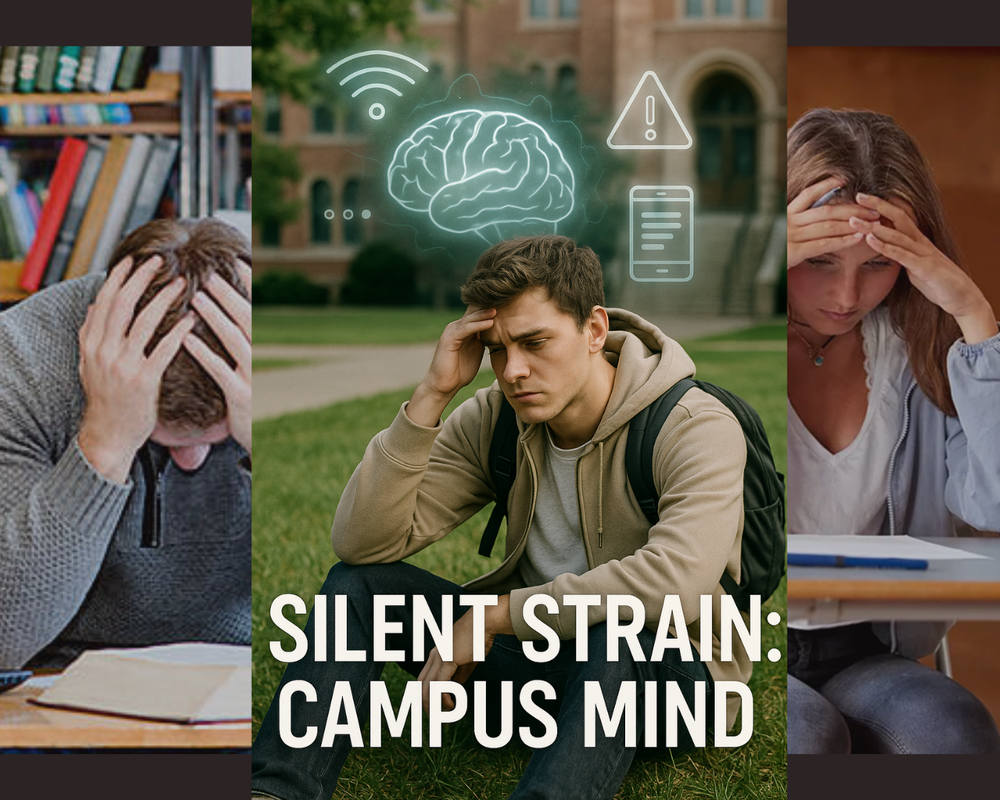Student depression and anxiety are escalating to crisis levels on campuses nationwide. While academic pressures, financial stress, and social transitions are frequently discussed, a less examined factor quietly exacerbates this crisis: compulsive pornography use. Research reveals troubling connections between pornography consumption and deteriorating mental health among students, mediated by loneliness, shame, and neurological disruption.
The Data Speaks
Multiple studies paint a consistent picture:Students using pornography daily report depression rates nearly double those of non-users (32% vs 19%) and loneliness at 36% vs 20%.
Among students exhibiting compulsive use, 17% report severe/extreme depression, 20.4% experience clinical anxiety, and 13.5% show high stress levels.
A structural analysis of Iranian students found loneliness mediates 54% of pornography's depressive impact, creating a self-reinforcing cycle.
These figures aren't mere correlations. Neurobiological mechanisms explain them: pornography triggers dopamine surges that provide temporary relief from anxiety but disrupt natural reward pathways. Over time, users develop tolerance, requiring more extreme content for the same effect while experiencing withdrawal symptoms like irritability and low mood when abstaining. This creates a neurological trap where pornography becomes a maladaptive coping mechanism.
The Loneliness Loop
University life, despite its apparent social buzz, can be profoundly isolating. Students struggling with pornography often experience what researchers' term "digital dissociation" – using online content to numb emotional pain, which ironically deepens disconnection. As one study notes:“By crowding out opportunities for meaningful connection, frequent use exacerbates users' sense of isolation. This isolation then fuels further consumption as a coping mechanism".
The isolation isn't just physical. Students describe feeling "emotionally blank" after sessions, struggling with concentration and academic engagement. This creates academic consequences that compound stress, feeding the very anxiety pornography temporarily alleviates.
The Self-Esteem Crisis
Pornography's curated fantasies breed unrealistic comparisons. Young adults internalize performative standards that distort body image and sexual expectations. As noted in clinical reports:"Constant exposure to idealized bodies and scenarios cultivates diminished self-worth, particularly when users contrast these depictions with their own lives and relationships".
This is especially damaging during developmental stages when identity formation is crucial. The resulting shame becomes a toxic undercurrent in intimate relationships, where students report performance anxiety and emotional disconnection.
Breaking the Cycle
Therapeutic approaches show promise:
Acceptance and Commitment Therapy (ACT) helps students observe urges without acting, building psychological flexibility. BYU's pilot program reduced compulsive behavior by teaching values-based action over impulse.
Cognitive Behavioral Therapy (CBT) targets the "trigger → use → shame" cycle by restructuring thought patterns and developing healthier coping strategies.
Group interventions mitigate isolation by fostering peer support. UT Dallas' Center for Students in Recovery provides community for those feeling alone in their struggle.
Crucially, treatment must address the underlying emotional drivers – often anxiety or trauma – rather than merely suppressing behavior. As therapists note: "Recovery requires replacing pornography's 'digital morphine' with authentic connection and self-compassion".
Toward Healthier Digital Citizenship
Addressing this issue demands institutional action:
Campus-wide digital literacy programs framing pornography as a public health issue
Anonymous screening tools identifying at-risk students during routine health visits
Training counselors in compulsive sexual behavior treatment modalities
The path forward isn't about moralizing but acknowledging neuroscience: what we consume shapes our neural architecture.
For students drowning in silent shame, the greatest intervention may be simple validation – naming their struggle as real, treatable, and unworthy of their self-loathing.
Healing begins when we replace judgment with curiosity, asking not "Why can't you stop?" “What pain feels too overwhelming to face right now?"
In that reframing lies liberation from the shame cycle – and hope for reclaiming both mental health and authentic human connection.

No comments:
Post a Comment